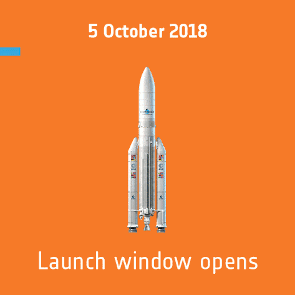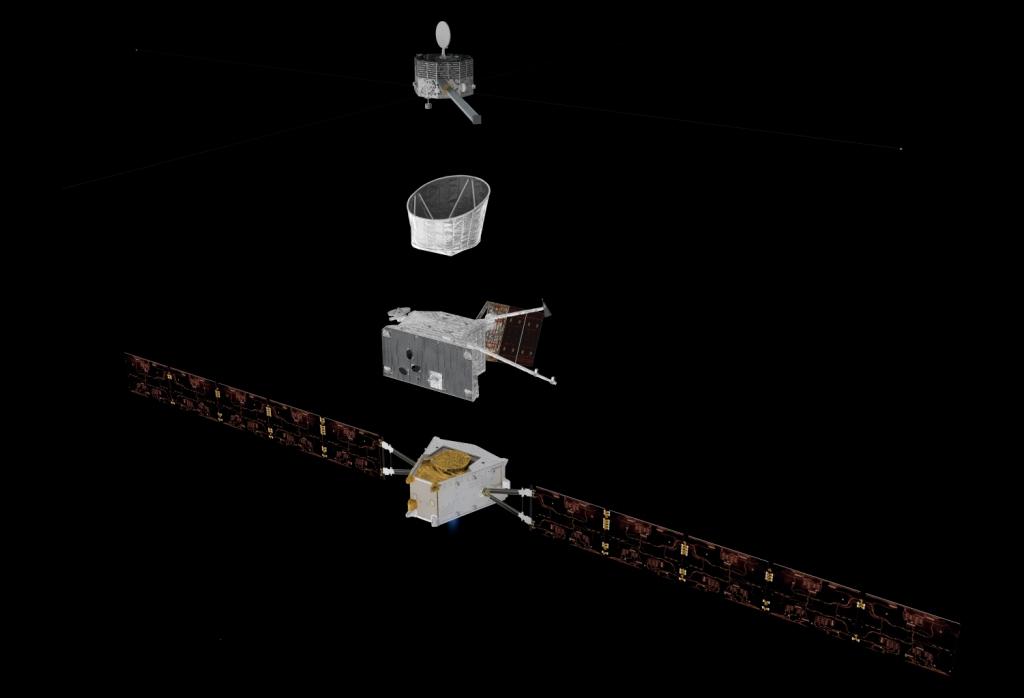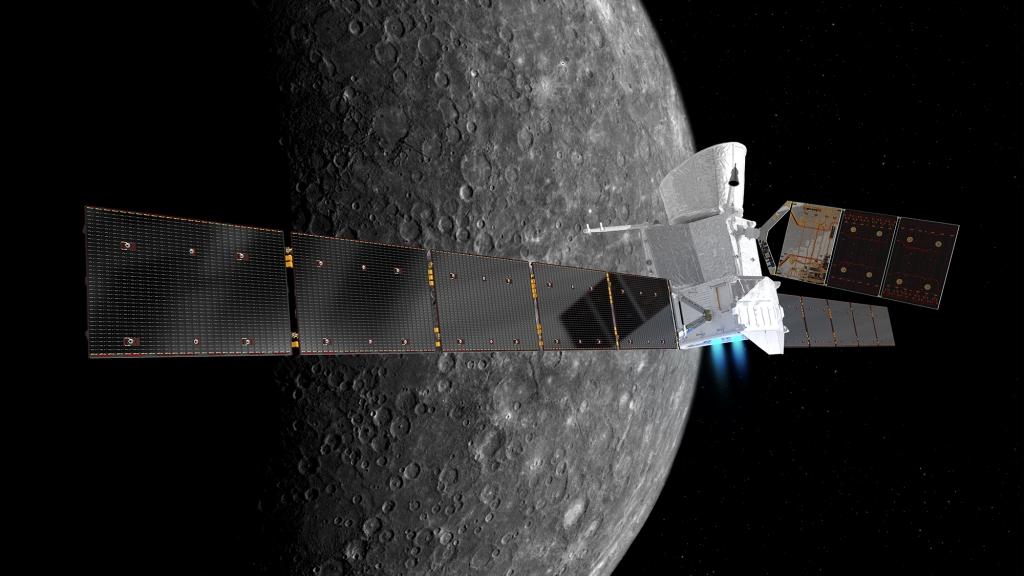The Two-For-One BepiColombo Mission To Mercury
Mercury’s Third Earthy Visitor!
The BepiColombo mission is the European Space Agency (ESA) and the Japan Aerospace Exploration Agency (JAXA) first interplanetary mission to the Planet Mercury. It will take 7 long years, involving several flybys of Earth, Venus and Mercury before the BepiColombo spacecraft enters orbit around Mercury. Interestingly the mission is made up of two spacecraft; the Mercury Planetary Orbiter (MPO) and the Mercury Magnetospheric Orbiter (MMO).
Fast Summary Facts About ESA's BepiColombo Mission
- Type: Orbiter
- Destination: Mercury
- Status: Active/Enroute
- Launch Location: Guiana Space Centre
- Launch Date: October 19th 2018
- Arrival Date: December 5th 2025
- Mission Duration: 7-year cruise, 1 year in Mercury orbit
Fun Facts About BepiColombo mission to orbit Mercury!
- The unusual ‘BepiColombo’ name for the mission is named in honour of Giuseppe "Bepi" Colombo, who first implemented the interplanetary gravity-assist manoeuvre to reach Mercury during the 1974 Mariner 10 mission.
- The BepiColombo mission is comprised of the cruise support spacecraft called the Mercury Transfer Module (MTM) which carries the Mercury Planetary Orbiter (MPO) which was built by the European Space Agency (ESA) and the Mercury Magnetospheric Orbiter (MMO) which was built by the Japan Aerospace Exploration Agency (JAXA).
- The mission aims to map Mercury’s surface, study the planets magnetic field, magnetosphere, interior structure and surface! Similar to NASA’s MESSENGER mission.
- BepiColombo launched in October 2018 aboard the powerful Ariane 5 rocket.
- The BepiColombo spacecraft will be the first to visit Mercury for 10 years.
- Once the spacecraft arrives into Mercury orbit, the two main spacecraft (MPO and the MMO) will separate and carry out their separate respective studies of Mercury.
- The BepiColombo components are expected to endure temperatures in excess of 350 °C while gathering data during its 1-year mission (a 1-year extension mission is possible too).
- The MTM has solar wings which span about 30 m from tip-to-tip.
- The probe utilizes solar panels for power generation and to power its solar-electric ion engines!
- The separate BepiColombo spacecraft will together make a complete map of Mercury at different wavelengths. The ESA built MPO will chart the planet's mineralogy and elemental composition, determine whether the interior of the planet is molten or not, while the JAXA MMO will investigate the extent and origin of Mercury’s magnetic field.



Epic Odyssey
BepiColombo
Orbit Insertion



